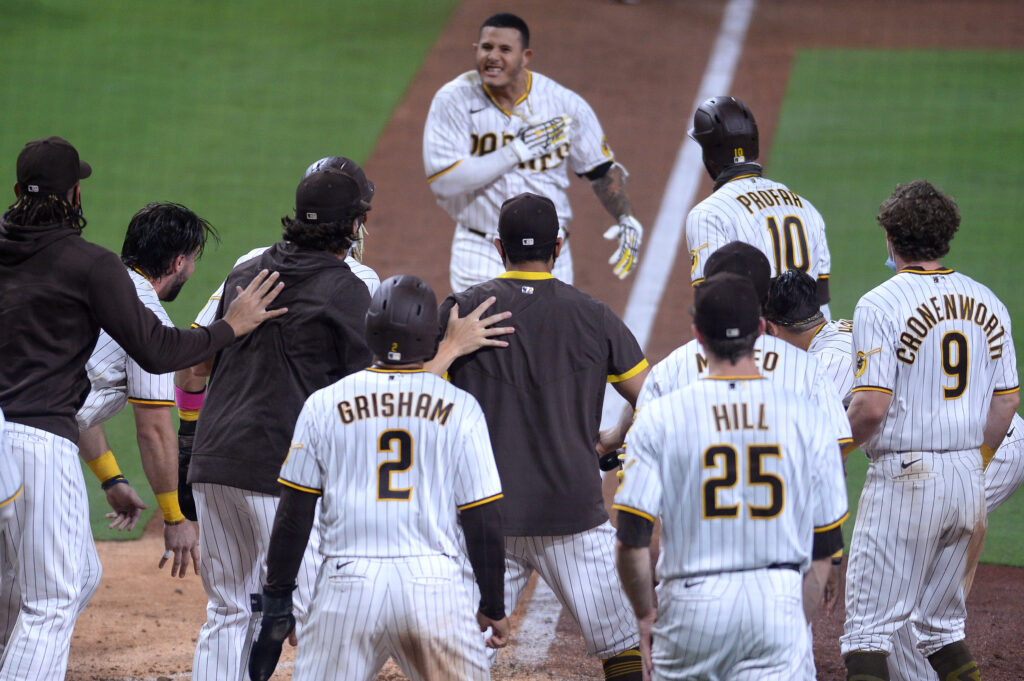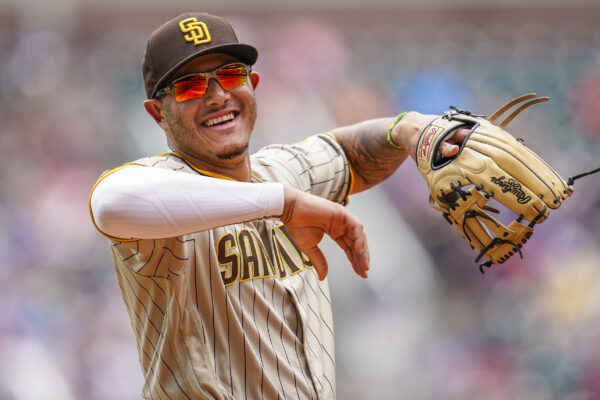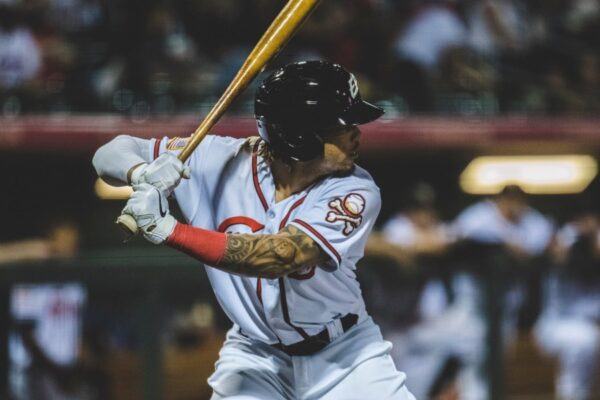Do new MLB rule changes help or hurt the Padres?

Mandatory Credit: Orlando Ramirez-USA TODAY Sports

After the excitement of ending the MLB lockout, it quickly became time to look towards the actual season.
With spring training just getting underway and with most free agents signed and most major trades (probably) done, it will quickly become about how teams adapt to the new rule changes which have come into play for the 2022 and 2023 season.
The players and owners agreed to ban the shift (meaning a team must have two infielders on either side of second base), a universal designated hitter (DH). They also agreed to expand the postseason to six teams adding a wild card team to each league.
The new rules will change how the season plays out, especially in the National League (NL), which will feel the effects of all three changes.
[wpedon id=”49075″ align=”right”]
Banning of the Shift
At first glance, the immediate loss that comes from the lack of the shift is that third baseman Manny Machado won’t be able to find himself in shallow right field, making fantastic plays and saving hits as he has for the past two seasons.
Manny Machado just caught a ball nearly at the warning track. He is a third baseman 😳 #Padres pic.twitter.com/KEff4Bd5p4
— Jason Burke (@ByJasonB) August 18, 2020
While the Padres will miss Machado’s stellar performances in shallow right, the Padres shifted on just 25.5% of opposing plate appearances in 2021, the ninth-lowest shift rate in the major leagues. That was an increase from 2020 when they shifted just 18.7% of the time, the second-lowest rate in the majors.
The Padres may lose some spectacular plays from Machado, but their defensive alignment should remain relatively similar to what it was in 2021.
They also have extremely talented defenders in Machado, Ha-Seong Kim, and Jake Cronenworth, who will still be able to cover a lot of ground in the infield.
The Padres hitters should be able to take advantage of the lack of shifts against them. Jurickson Profar was facing a shifted defense in 70+% of his at-bats, and his wOBA (weighted on-base average) was 50% better when he was facing a non-shift. Trent Grisham, Fernando Tatis Jr, and Eric Hosmer were in the top ten in terms of shift % on the Padres, and all of them saw their average increase when they were facing a non-shifted defense.
The Padres may lose some of their highlight film plays, but they’ll become a better all-around team, mainly because other teams will lose more.
Universal DH
The second major rule change was the NL finally adopting the use of a designated hitter. Both leagues used the DH in the covid-shortened 2020 season, but the NL allowed pitchers to pick up their bats for the final time in 2021. The Padres will now finally get to use a designated hitter for all 162 of their games.
The Padres’ recent trade for Luke Voit means that he and Hosmer will likely spend a lot of time as the DH. The new DH position will also be used to give much-needed off-days to players like Machado, Tatis, and Cronenworth, whose bats are critical to the lineup.

The final way to use the DH will be to give at-bats to the plethora of catchers that the Padres have, as Austin Nola, Jorge Alfaro, Luis Campusano, and Victor Caratini are all vying to make the opening day roster. Nola will be the everyday catcher, Alfaro may be able to find playing time in the outfield as well as behind the dish, and Caratini will primarily work as Darvish’s personal catcher.
The DH may be a great way for Campusano to get at-bats against major league pitching. He homered in the second spring game of the year against the Cubs on Saturday.
The universal DH will be handled well by new Padres manager Bob Melvin, as he has experience utilizing a DH from his time in the AL as the manager of the Athletics. There are so many different ways that the extra spot in the lineup can be used, and all the other teams will have those options as well, but Melvin is certainly up to the challenge of maximizing the potential of the DH.
Expanded Playoffs
The final major change is the addition of the third wild card team to the playoffs.
The trickle-down effect of this was that the wild card game was expanded to a three-game series (just like the 2020 wild card series) and that the final division winner no longer gets a bye to the division series. They will instead play the final wild card team. All three wild card games will be hosted by the higher-seeded team in each league.
The expanded playoffs can only help the Padres because it makes it easier to get in as Fernando Tatis Jr misses time to begin the season. The fact that the top wild card team gets to host the series is also an advantage, as there’s a clear path to home-field advantage in the playoffs.
The biggest loser of the new change in playoff rules is the weakest division winner, who will now need to play an extra playoff series. But the extremely talented NL West will likely see its division winner win over 100 games (the NL West has had the top-seeded NL team for the past three years). This makes it highly unlikely the Padres occupy the unfortunate position of being the third-best division winner at the end of the season.
The expanded playoffs can basically only help the Padres in the short-term, making all three rule changes advantageous for the Padres.
Sam is a Senior in High School. He has been writing for three years, and started at EVT in June of 2021. He’s headed to Syracuse’s Newhouse School of Communications in the fall of 2023.